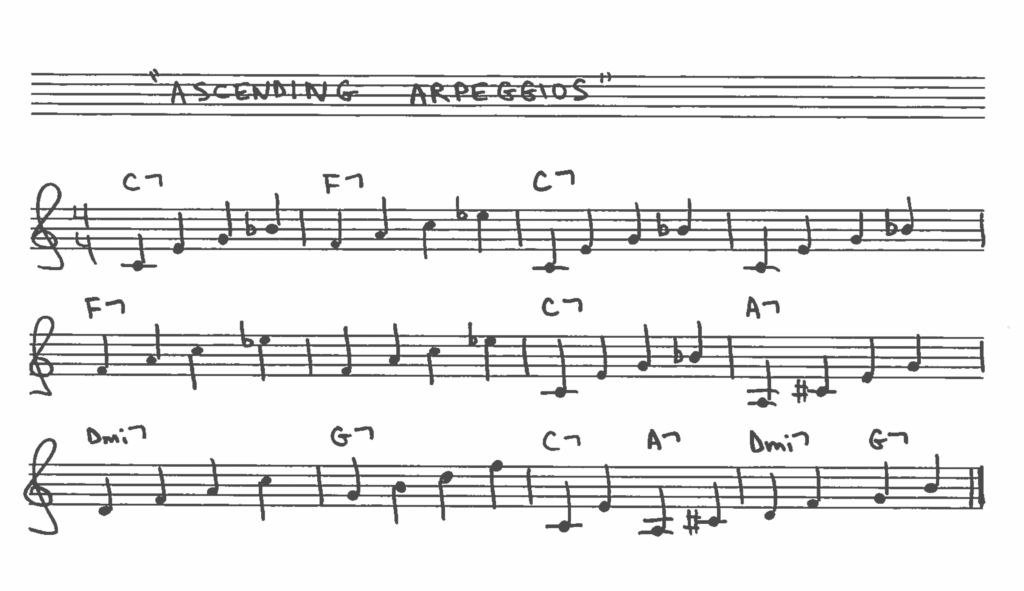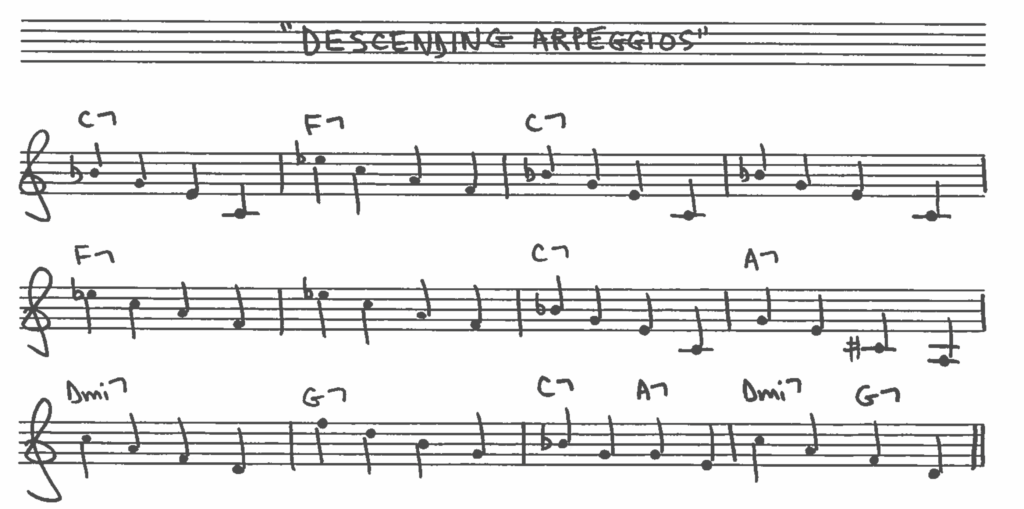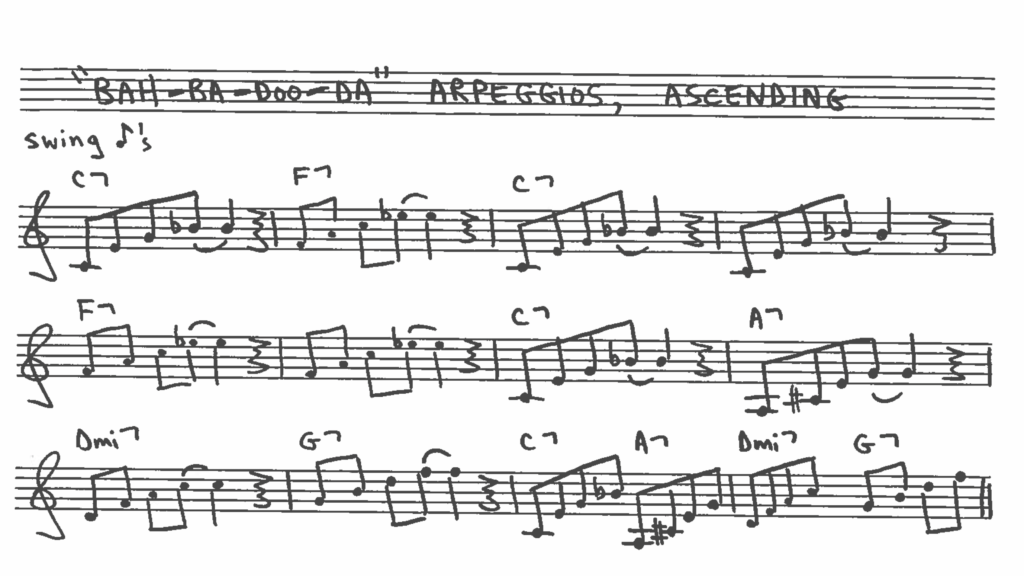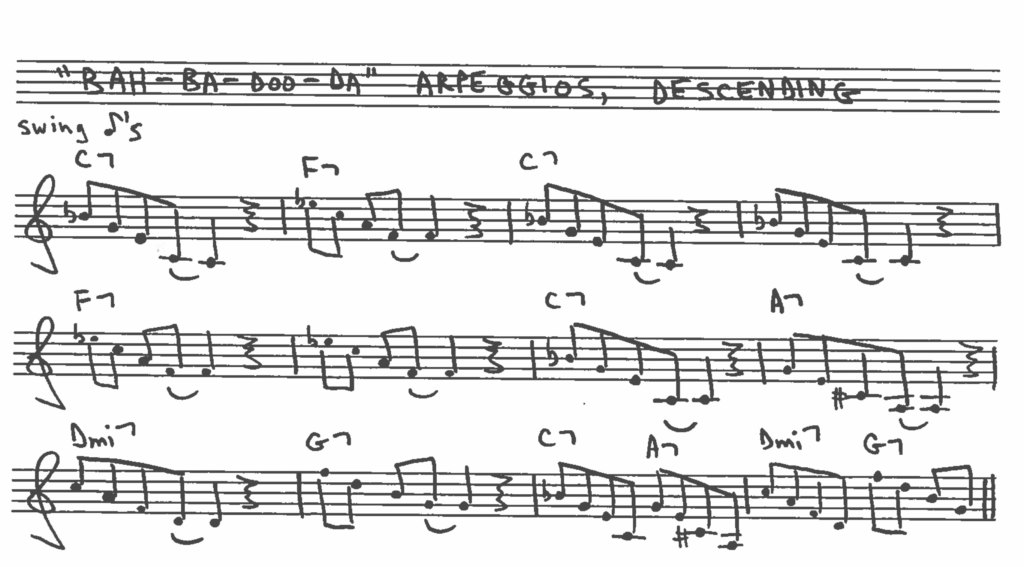Logan and I have been arpeggiating our way through the 12-bar blues progression over the past week and a half. There hasn’t been any improvisation per se; but we are building a foundation for what will follow in future lessons.
I am really enjoying practicing with my son and introducing him to some jazz improvisation basics. I also hope this blog series might be beneficial for music teachers who are considering incorporating jazz into their lessons and/or ensemble rehearsals.
Here’s a video from some of our practice sessions this week:
As I said in my last post, I want to keep the theory minimal in these lessons. I can avoid conversations about scales, and how arpeggios are constructed, by writing each exercise to look like one of the brief songs he prepares for his trumpet lessons (note: I am not his trumpet teacher). As he plays what’s on the page, he is learning the fingering and sound of the arpeggiated harmonic progression. Because he tends to memorize digital patterns and likes playing by ear, he internalized (got past reading) the arpeggios by the end of the week.
As shown above, we started with simple quarter note arpeggios, ascending. For the G7 chord in measure 10, I could have written it down the octave. Logan likes opportunities to play high, so I wrote it in the higher octave for him. (Currently, I am more comfortable playing it down the octave, but I’ll regard this as an opportunity to help expand my range, as a beginning trumpeter.)
In the last two measures of a blues, the chords change every two beats instead of once per measure. Because of this, we can’t play all four notes of an arpeggio while limiting ourselves to using quarter notes exclusively. The solution is playing only the first two notes of the arpeggio (the root and third) in this spot.
Next, I introduced descending arpeggios. In the last two measures (referred to as “the turnaround” by jazz musicians), we play the top two notes of the arpeggio (flat 7 and 5).
After several days of becoming comfortable with playing the ascending and descending arpeggios in quarter notes, we switched to arpeggiating with swing eighth notes. The smaller rhythmic unit facilitates playing the complete arpeggio in last two measures.
I call these “bah-ba-doo-da” arpeggios, because that’s how they are sung.
And here is the descending version:
So as not to become laborious, I have been limiting the newly added jazz component of our daily trumpet practice routine to a maximum of ten minutes. So far it seems to be working out fine, and we’re still both enjoying ourselves.
The notated examples above can be downloaded here (in PDF format):
- Quarter Note Arpeggios (PDF)
- Bah-ba-doo-dah Arpeggios (PDF)




